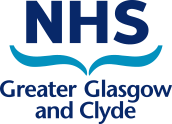Lidocaine 5% Medicated Plasters: Primary Care Update
Background
Despite limited evidence supporting the use of lidocaine plasters, NHSGGC spend continues to increase. Total spend1 increased from £2.39 million in 2017/2018 to £3.41 million in 2020/2021. Lidocaine plasters are only licensed for the symptomatic relief of neuropathic pain associated with previous herpes zoster infection.
A local audit of GP records of patients prescribed lidocaine plasters demonstrated that only 3% were prescribed for a licensed indication. The majority of patients (66%) were treated for musculoskeletal indications.
There are no well-designed clinical trials supporting the use of lidocaine plasters for musculoskeletal pain.
It should be noted that often lidocaine plasters are prescribed for unlicensed indications because alternative therapies such as opioids, gabapentinoids, NSAIDs are not tolerated or are contra-indicated.
The SMC concluded that there are only limited comparative data available for lidocaine plasters, the comparative clinical effectiveness remains unclear.
Key points
- Lidocaine plasters are included in the NHSGGC Total Formulary, restricted to patients who are intolerant of first line therapies for post-herpetic neuralgia or where these therapies have been ineffective
- For neuropathic pain, as per NHSGGC Chronic Non Malignant Neuropathic Pain Guidelines, first line treatments include amitriptyline and/or gabapentin (step 1), pregabalin (step 2) or duloxetine (step 3). Lidocaine plasters should only be used as per the Formulary restriction above if steps 1-3 have failed
- When initiating therapy, for any indication, patients should be advised that lidocaine plasters will initially be prescribed for a trial period
- Review patients after 2-4 weeks and discontinue if the patient perceives little benefit. See audit outcomes below
- Continue to review regularly with trials of reduction/cessation
- Consider substitution with alternative treatment such as cold packs
- In acute care, there has been discussions around making lidocaine plasters an “alert medicine”, however, this has not yet been implemented
NHSGGC Prescribing Initiative
A prescribing initiative was undertaken to promote prescribing for the treatment of post-herpetic neuropathic pain in accordance with the NHSGGC Formulary and to reduce the inappropriate use of lidocaine 5% medicated plaster without compromising patient safety or care.
Outcome
Despite NHSGGC prescribing initiatives over the last number of years, lidocaine plaster prescribing costs in NHSGGC have continued to rise in comparison with other Boards. NHSGGC now has the highest cost per 1000 weighted patients in Scotland, with costs per 1000 patients list size increasing in March 2020 to 150% of March 2018 costs. Other Health Boards have seen either stabilisation of costs or a reduction in costs.
Around 20% of all NHSGGC lidocaine plaster prescribing costs derive from 25 GP practices. Analysis of prescribing data in these practices demonstrated no correlation between high levels of lidocaine plaster prescribing and low levels of strong analgesics prescribing.
Further exploration of a random snapshot of lidocaine prescribing of 196 newly initiated patients in the top 20 lidocaine plaster prescribing GP practices (approximately 10 patients per practice) showed:
- The majority of NHSGGC lidocaine plaster prescribing (78%) was initiated within primary care in the highest lidocaine prescribing practices.
- Secondary care initiated lidocaine prescribing accounted for around 21% of prescriptions and no one particular hospital (or specialty) stood out as an outlier for initiation
- Only 37% of patients had documented evidence of lidocaine review 2-4 weeks after it was first prescribed as recommended in NHSGGC Chronic Non Malignant Neuropathic Pain Guidelines
1 Annual prescribing costs from PRISMS accessed 27th July 2021
Published 04/08/2021 and updated 15/11/2024. Links updated 09/03/2022 and again 01/05/24.
Medicines Update blogs are correct at the time of publication.
